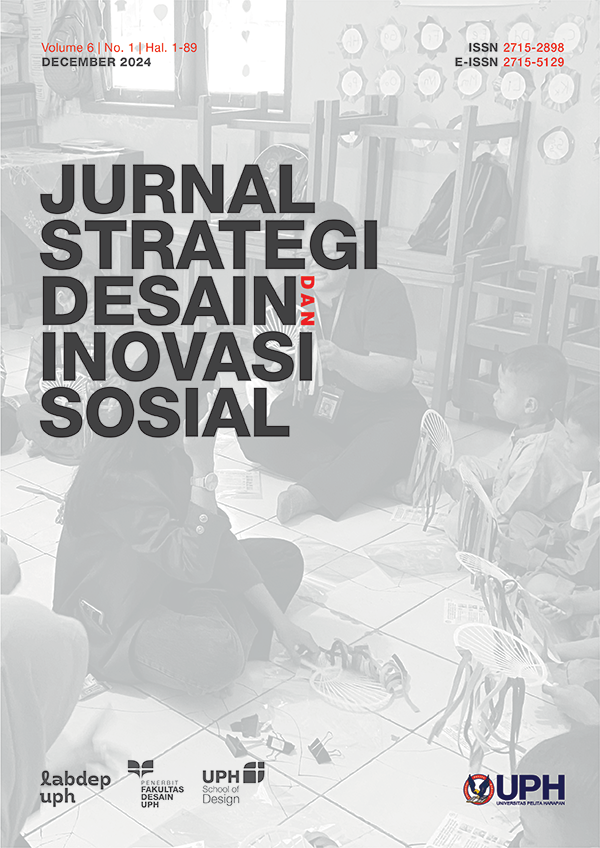ENHANCING GEN Z’S SENSORY EXPERIENCE THROUGH MULTI-SENSORY SOCIAL SPACE DESIGN
Περίληψη
Human existence has long been intertwined with nature and its elements. Before
modernization and technology became part of our daily lives, our five senses (sight, hearing, smell, touch, and taste) helped us perceive and interact with the world. However, in today’s digital era, we are increasingly disconnected from our environment. Our attention is consumed by screens, dominated by all things digital leading to a diminished awareness of the world around us. This disconnection is especially evident among Generation Z, who were “born to be digital”. They may not fully appreciate the value of sensory experiences, relying on technology as a substitute. This impacts their well-being through cognitive, affective, and psychomotor aspects. Recognizing this, author proposes the design of a social space that is intended on rebuilding and reestablishing human sensory connections, especially for Generation Z, with their environment through three aspects: humans with nature and environment, with each other, and with themselves. The design of a multi-sensory social space serving as a third place for Generation Z is identified through theoretical studies, precedent studies, and questionnaires. The research results were implemented into the design through activities and programs to enhance specific sensory experiences. Consequently, design strategies include site design, access & circulation, space program & activity zoning, building massing, facade & opening, interior planning, and open space & green pattern planning.Additionally, site identification of Pondok Ranji, Bintaro was undertaken in hopes to restore the
holistic relationship between humans and their environment.
Αναφορές
AHAYES. (2020, September 30). The Rise of Third Place and Open Access Amidst the Pandemic [Text]. Advocacy, Legislation https://www.ala.org/advocacy/diversity/odlos-blog/rise-third-place & Issues.
Drake, S. (2014). The Elements of Architecture (1st ed.). Taylor and Francis. https://www.perlego.com/book/1546421/the-elements-of-architecture-principles-of environmental-performance-in-buildings-pdf
Erwine, B. (2016). Creating Sensory Spaces (1st ed.). Taylor and Francis. https://www.perlego.com/book/1561797/creating-sensory-spaces-the-architecture-of-the invisible-pdf
Gen Z Statistics 2023: How Many People Are In Gen Z? - EarthWeb. (n.d.). Retrieved September 21, 2023, from https://earthweb.com/gen-z-statistics/
Generation Z: A Century in the Making. (2018). https://typeset.io/papers/generation-z-a century-in-the-making-2aitoqvlp2
Generation Homebody. (n.d.). Retrieved September 21, 2023, from https://www.thefuturelaboratory.com/blog/generation-homebody
Integrating the Senses: An Architecture of Embodied Experience. (2010). https://typeset.io/papers/integrating-the-senses-an-architecture-of-embodied-36wvyeftwm
Lupton, E., & Lipps, A. (n.d.). The Senses. Retrieved October 15, 2023, from https://ereader.perlego.com/1/book/1099418/17?element_originalid=ch10
Oldenburg, R., & Brissett, D. (1982). The Third Place. Qualitative Sociology, 5(4), 265–284. https://doi.org/https:// doi.org/10.1007/BF00986754
Pallasmaa, J. (2012). The Eyes of the Skin: Architecture and the Senses (3rd ed.). Wiley. https://www.perlego.com/book/1002180/the-eyes-of-the-skin-architecture-and-the-senses-pdf
Senses of place: Architectural design for the multisensory mind | Cognitive Research: Principles and Implications | Full Text. (n.d.). Retrieved October 19, 2023, from https://cognitiveresearchjournal.springeropen.com/articles/10.1186/s41235-020-00243-4
Spence, C. (2020a). Senses of place: Architectural design for the multisensory mind. Cognitive Research: Principles and Implications, 5(1), 46. https://doi.org/10.1186/s41235-020-00243-4
The Perception of Sound and Space. (n.d.). Retrieved October 18, 2023, from https://ereader.perlego.com/1/book/3363319/12
Λήψεις
Δημοσιευμένα
Τεύχος
Ενότητα
Άδεια
Πνευματική ιδιοκτησία (c) 2025 Brian Edgar, Felia Srinaga, Jacky Thiodore

Αυτή η εργασία είναι αδειοδοτημένη υπό το CC Αναφορά Δημιουργού – Μη Εμπορική Χρήση – Παρόμοια Διανομή 4.0.
Dengan mempublikasikan artikel pada Jurnal Strategi Desain dan Inovasi Sosial (JSDIS), penulis setuju bahwa:
- Penulis memegang penuh hak cipta atas artikel yang dipublikasikan.
- Penulis tidak pernah mempublikaskan artikel penulis dalam publikasi lainnya.
- Penulis dilarang mempublikasikan artikel yang sudah diterbitkan JSDIS tanpa mencantumkan bahwa artikel tersebut sebelumnya sudah pernah diterbitkan di JSDIS.
- Redaksi JSDIS memiliki hak untuk mempublikasikan, mendistribusikan, dan menggunakan artikel penulis untuk keperluan publikasi jurnal dengan tetap mencantumkan penulis sebagai pemegang hak cipta.



.jpg)
